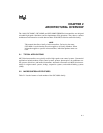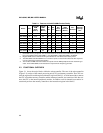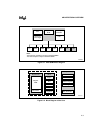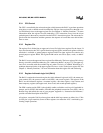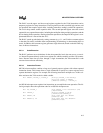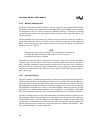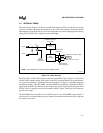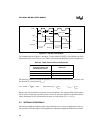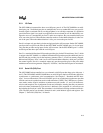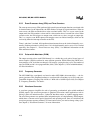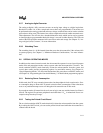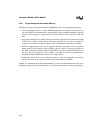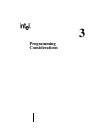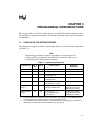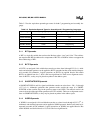
2-9
ARCHITECTURAL OVERVIEW
2.5.1 I/O Ports
The 8XC196Mx microcontrollers have seven I/O ports, ports 0–6. The 8XC196MD has an addi-
tional port, port 7. Individual port pins are multiplexed to serve as standard I/O or to carry special-
function signals associated with an on-chip peripheral or an off-chip component. If a particular
special-function signal is not used in an application, the associated pin can be individually con-
figured to serve as a standard I/O pin. Ports 3 and 4 are exceptions; they are controlled at the port
level, not at the pin level. When the bus controller needs to use the address/data bus, it takes con-
trol of the ports. When the address/data bus is idle, you can use the ports for I/O.
Port 0 is an input-only port that is also the analog input for the A/D converter. On the 8XC196MH,
port 0 provides two pins for the EPA. On the 8XC196MC and 8XC196MD, port 1 is also an input-
only port that provides analog inputs for the A/D converter. On the 8XC196MH, port 1 is a bidi-
rectional port that shares pins with the serial I/O port.
Port 2 is a standard, bidirectional I/O port that provides pins for the EPA and timers. Port 7, which
is unique to the 8XC196MD, is a standard, bidirectional I/O port that provides additional pins for
the EPA and also provides pins for the frequency generator. Ports 3, 4, and 5 are memory-mapped,
bidirectional I/O ports. Ports 3 and 4 serve as the external address/data bus, while port 5 provides
bus-control signals. Port 6 is a standard, output-only port that provides pins for the pulse-width
modulator and waveform generator. Chapter 6, “I/O Ports,” describes the I/O ports in more detail.
2.5.2 Serial I/O (SIO) Port
The 8XC196MH microcontroller has a two-channel serial I/O port that shares pins with ports 1
and 2. (The 8XC196MC and 8XC196MD have no serial I/O ports, but have PTS modes that allow
asynchronous or synchronous serial communication. See Chapter 5, “Standard and PTS Inter-
rupts,” for more information.) The serial I/O (SIO) port is an asynchronous/synchronous port that
includes a universal asynchronous receiver and transmitter (UART). The UART has two synchro-
nous modes (modes 0 and 4) and three asynchronous modes (modes 1, 2, and 3) for both trans-
mission and reception. The asynchronous modes are full duplex, meaning that they can transmit
and receive data simultaneously. The receiver is buffered, so the reception of a second byte can
begin before the first byte is read. The transmitter is also buffered, allowing continuous transmis-
sions. The SIO port has two channels (channels 0 and 1) with identical signals and registers. See
Chapter 7, “Serial I/O (SIO) Port,” for details.



